Product adoption is a key process in SaaS business. It tells the story of how casual interest in your product transforms into complete implementation and regular use.
SaaS experts were able to develop metrics that can help track this process and closely monitor how well your software integrates with the work and life of your users.
This article will mention some of those metrics and discuss their value and possibilities for implementation.
Let’s dive right in and find out how adoption is measured.
Product Conversion Rate
Conversion rates are among the most tracked metrics in SaaS business.
That’s because they can tell product development, marketing, sales, and other teams a lot about how users behave and whether they are taking the actions you want them to take.
In specific terms, product conversion rate is simply the percentage of users that have completed a given task.
This task can be anything relevant to the adoption of the product that can be objectively measured.
Examples include:
- Subscribing to a paid version of the product
- Trying out the product on a trial basis
- Downloading knowledge resources to learn about the product
- Subscribing to the company newsletter
- Completing a key action in the product
Tracking the conversion rate is done using your analytics software of choice. Just set triggers for key actions and monitor how many users complete them.
For example, here’s how conversion tracking for a car service app looks within Mixpanel, a great product analytics tool.
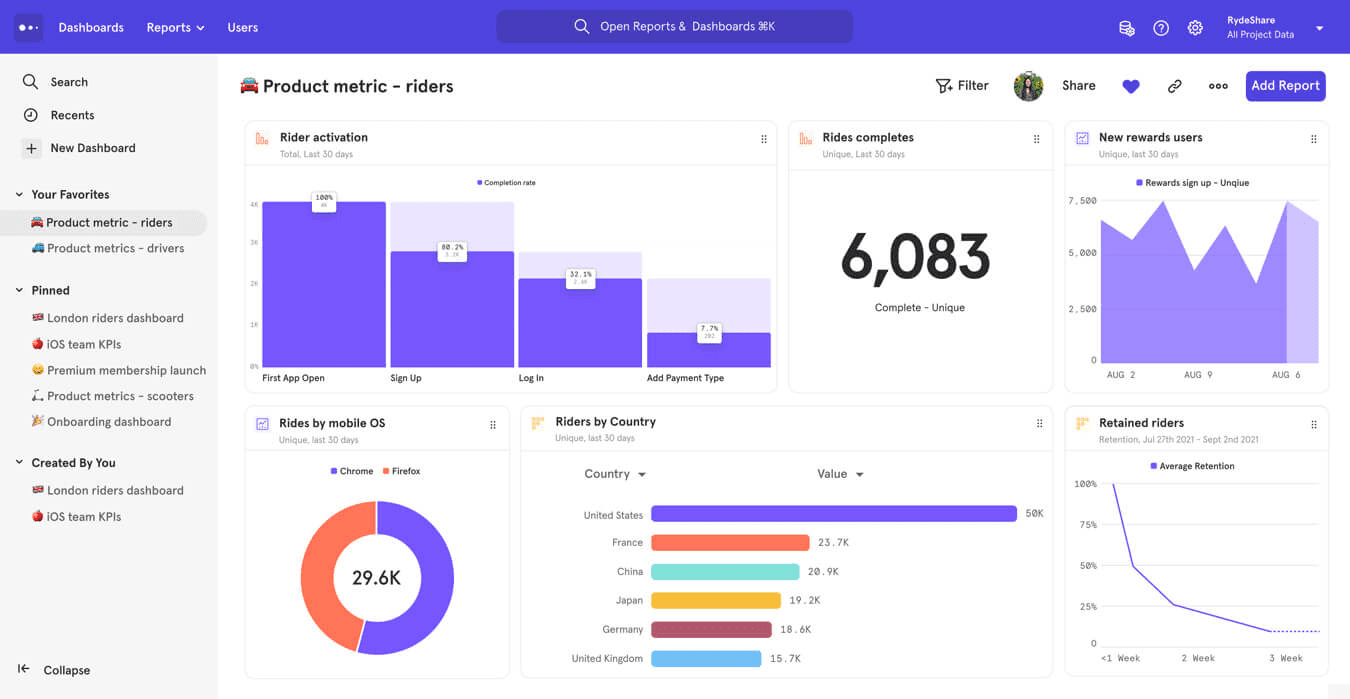
Source: Mixpanel
Product conversion tracking is a good adoption metric because it can tell you exactly how your users are moving through the stages of the adoption process.
For instance, if you notice that users are failing to commit to a paid plan (adoption stage) after signing up for a free version (trial stage), that might indicate they’re having trouble in the activation stage—for instance, not finding their Aha! moment.
That’s valuable insight because it tells you exactly where you need to focus your efforts to improve adoption.
Conversions are a key indicator of success for SaaS companies, so make sure you’re tracking them in your product.
Onboarding Completion Rate
Onboarding and adoption are strongly linked, meaning that improvements in the onboarding process will almost always result in improvements in product adoption.
Hubspot proved this when they experimented with the onboarding process for their sales platform (now Hubspot Sales, previously Hubspot Sidekick).
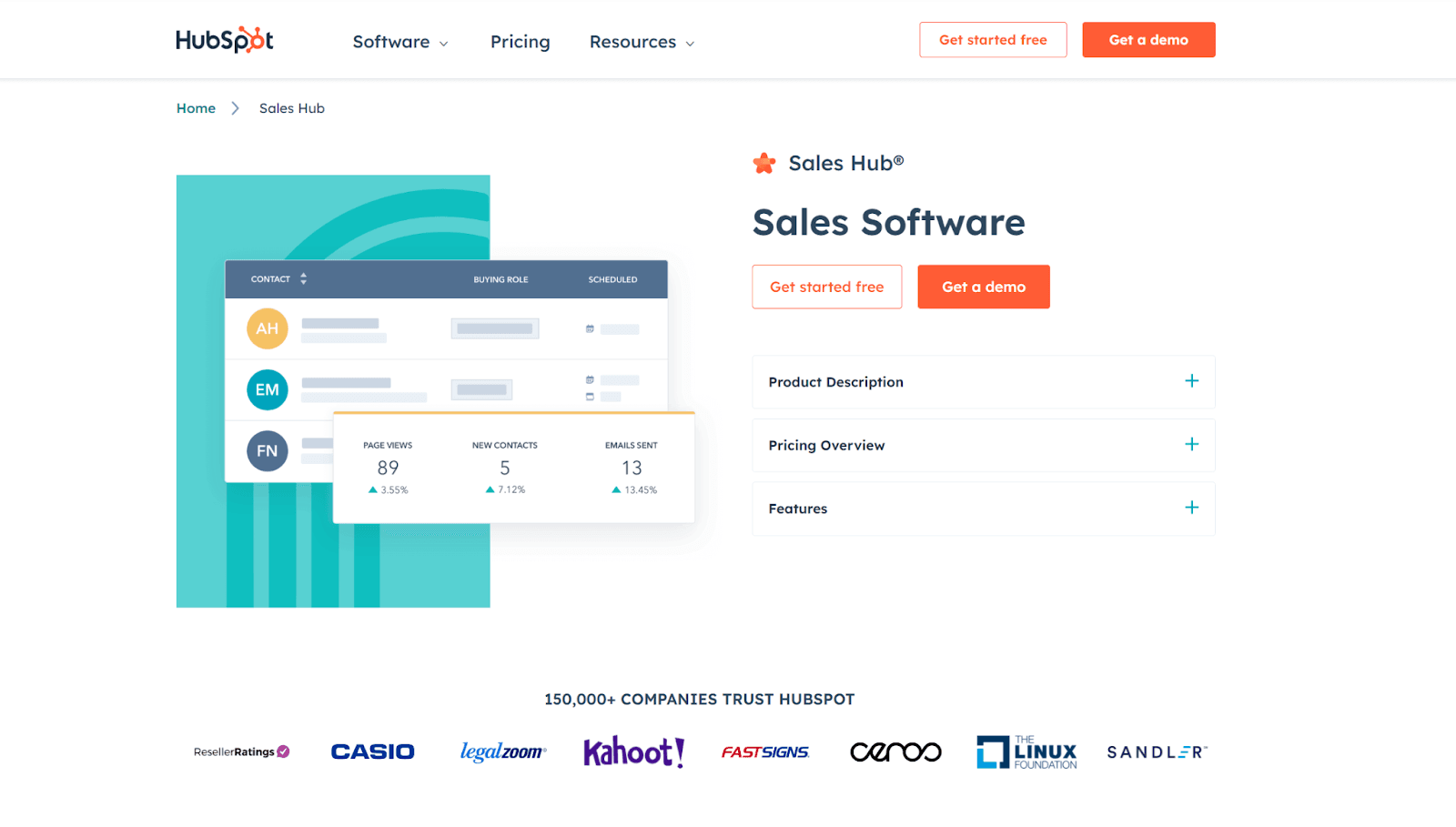
Source: Hubspot
They discovered that once they made small improvements to the onboarding process, users were more likely to keep using the platform, even in the long term.
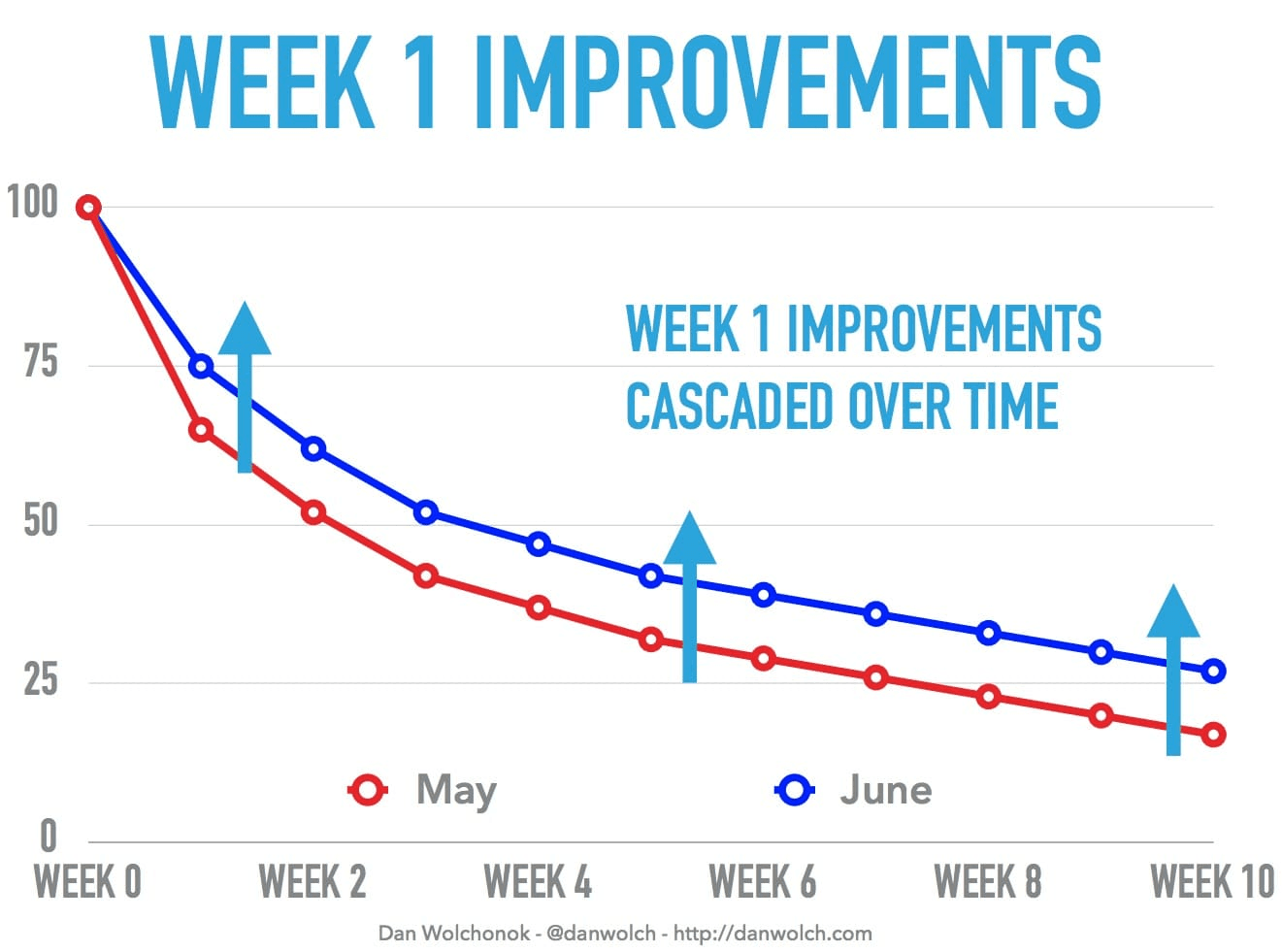
Source: Hubspot
In other words, they proved that quality onboarding directly and positively impacts product adoption.
But how can you know if the changes you’re making are improving the onboarding process or just making it more complex and frustrating for users?
Without talking to them, that can be hard to achieve. Fortunately, there’s one metric that can help.
Onboarding completion rate is pretty self-explanatory. It tells you what percentage of your users complete the onboarding process.
When you track this metric on a timeline, you can see the figure rise and falter.
Like in this example from UserGuiding:

Source: UserGuiding
So, if you see an uptick in your onboarding completion rate over a certain period of time, that means the changes you implemented did the trick and the process is now more engaging and easier to complete for users.
And since successfully onboarded users are more likely to keep using the product, this is the way to indirectly improve product adoption as well.
Time-To-Value
A pivotal moment in the product adoption process is when the user finally realizes the value your product can provide for them and decides to integrate the software into their work/life.
After this Aha! moment, you can safely claim that product adoption has been attained and you can expect the user to keep interacting with your software.
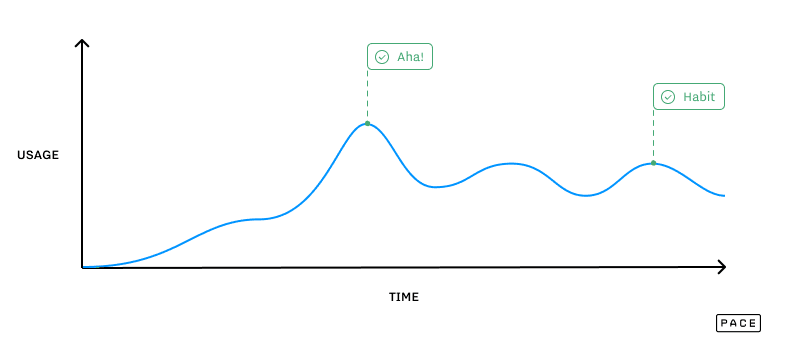
Source: Pace
The time-to-value metric measures the time it takes users to arrive at their Aha! moment, counting from their first interaction with the product.
Mind you, this metric can be a little tricky.
First, you’ll have to figure out what the moment of activation actually is for your product.
A good way to do that might be to reverse engineer the Aha! moment.
Since users are very likely to retain the product after their Aha! moment, you can try to find out what needs to happen before drop-offs are reduced significantly.
For Facebook, that prerequisite is connecting with ten friends in seven days. For Dropbox, it’s saving one file, in one Dropbox folder, on one device.
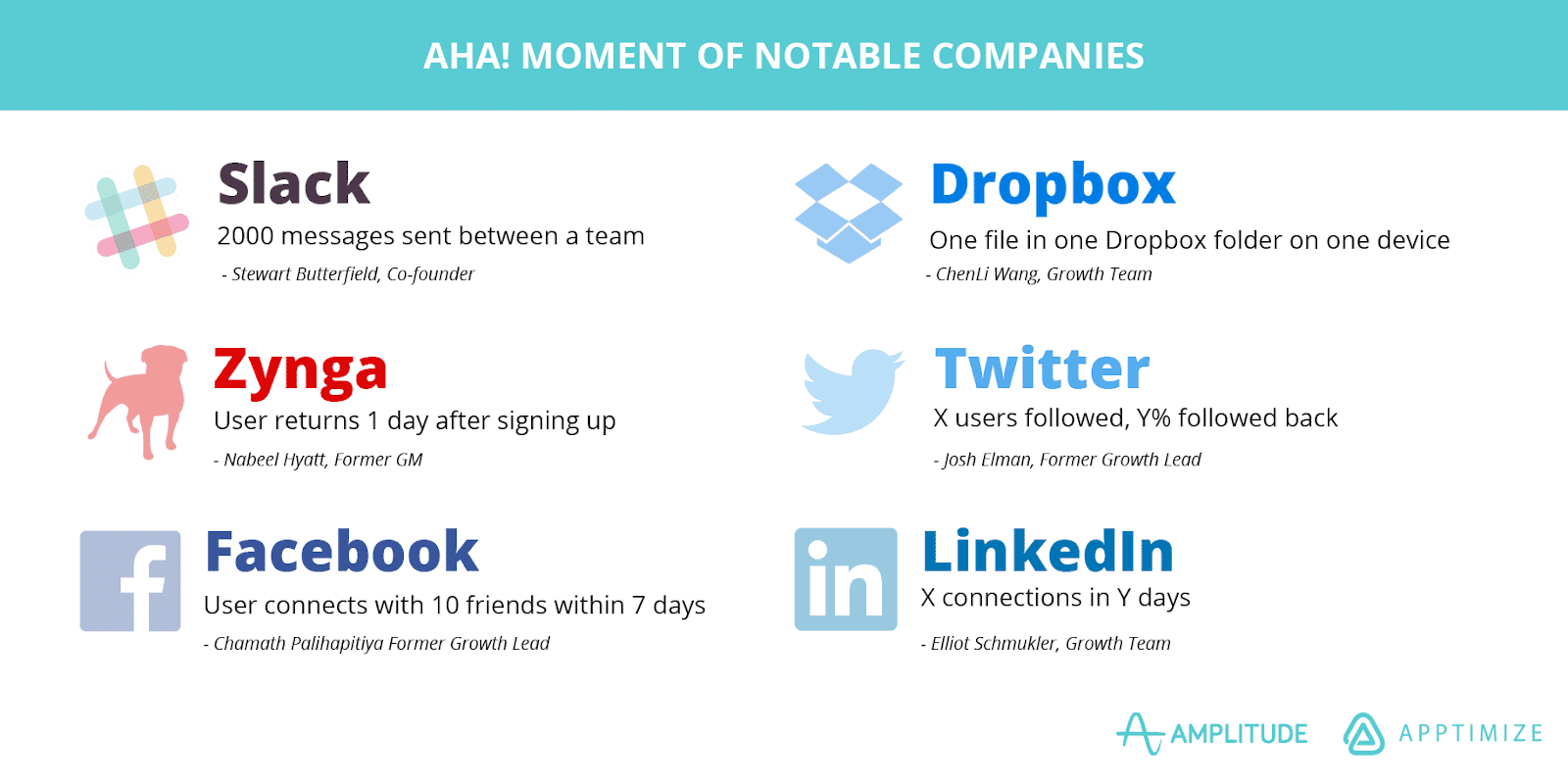
Once you know when activation happens, you can measure how much time, on average, it takes users to arrive at it.
But why would you even want to?
The reason is that it allows you to take steps to shorten that time.
And that’s something you should always strive to do because the longer it takes your users to find value, the greater the chances they’ll abandon your service before they do.
So definitely keep an eye out for this important metric.
Number of Active Users
This metric is one of the clearest, most straightforward indicators of healthy product adoption. It’s easy to see why.
Active users log into your product regularly, meaning they need the product to perform their work or some other habitual activity.
In that sense, active users are almost synonymous with users who have reached product adoption.
The metric can be tracked for different time periods, so we most often have either daily active users (DAU) or monthly active users (MAU).
Both metric versions are expressed as a total number of users, not a percentage. The choice between the two will usually depend on the kind of product you’re operating.
For example, Duolingo is a product that promises to teach users a new foreign language, but only if they commit to practicing every day.
Therefore, it makes sense for Duolingo to focus on DAU and the ways to increase it, since this product is adopted with daily use.
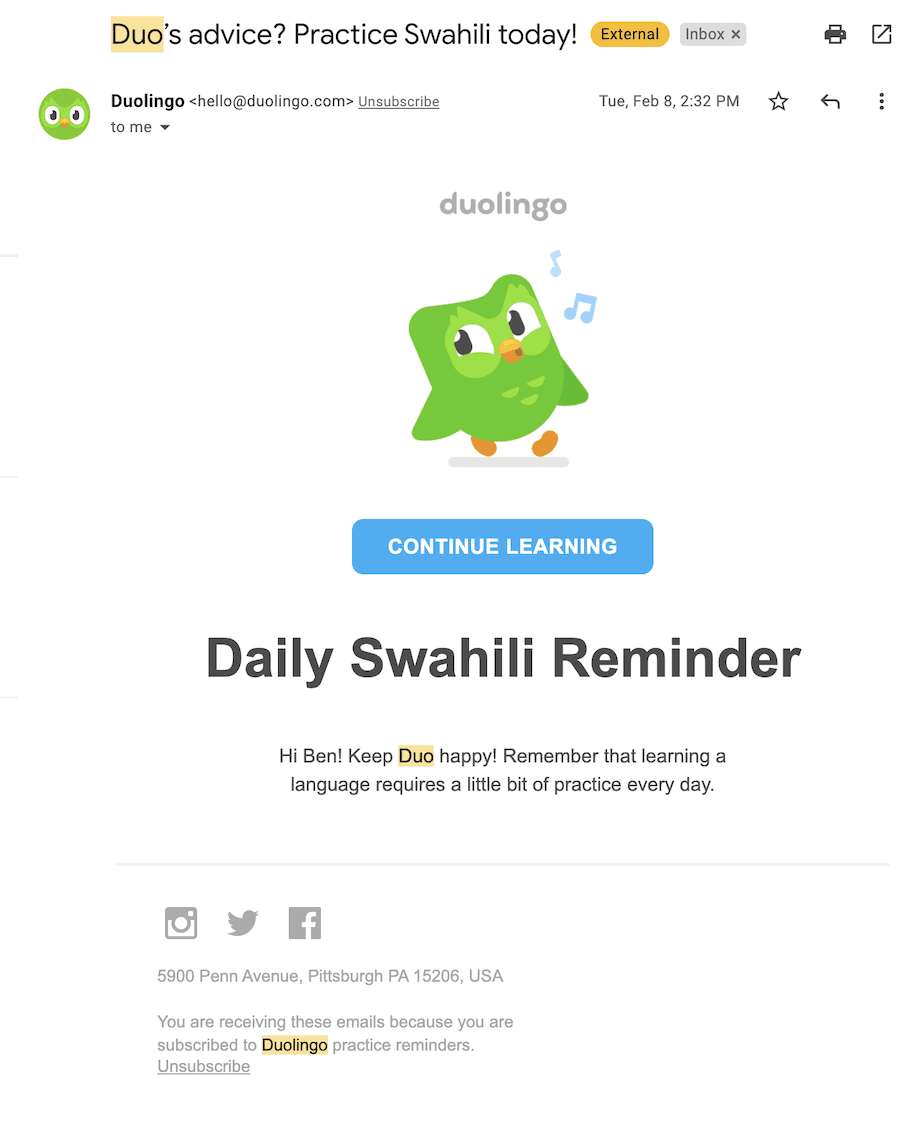
Source: UX Design
On the other hand, Canva is a graphic design tool that helps users easily create all sorts of visuals without a complex learning curve (like the Adobe suite has, for example).
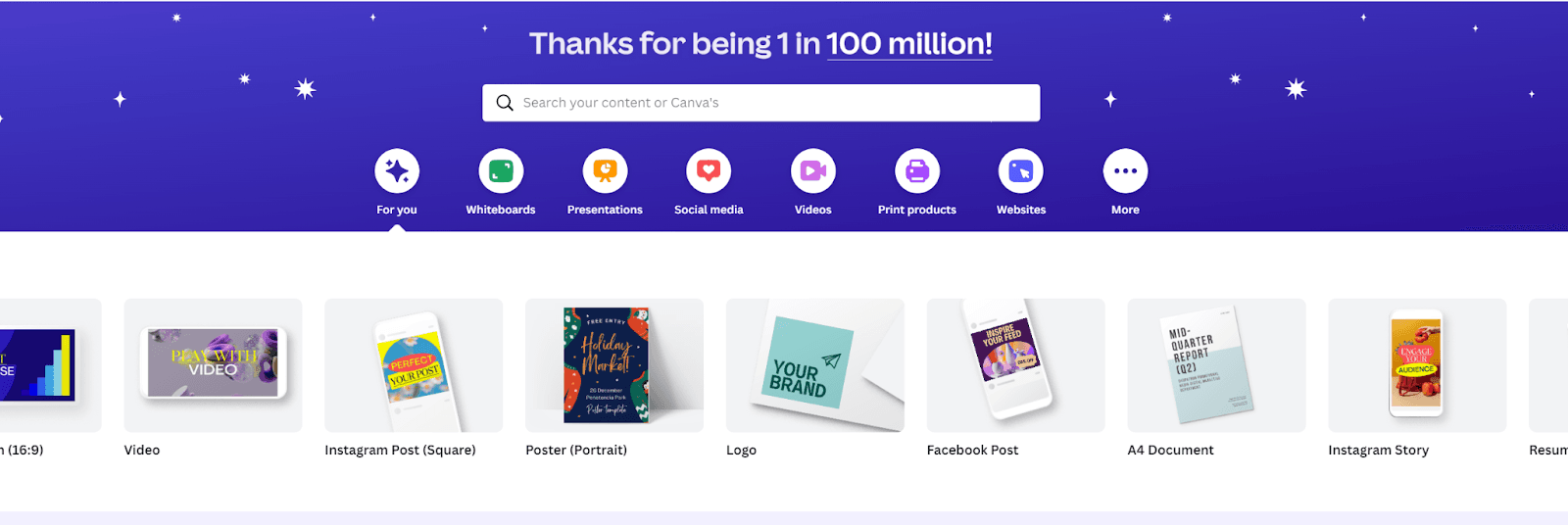
Source: Canva
Since the tool is easy to learn and many professionals don’t need to create visuals every day, it makes more sense to focus on MAU as a key metric.
That being said, most SaaS providers will track both metric versions but concentrate on one to improve product adoption.
The number of active users is a good indicator on its own, but it’s even more powerful when looked at in combination with other figures, like in the next metric we’re going to discuss.
Product Adoption Rate
This is the metric that directly measures product adoption.
It’s calculated simply by dividing the number of new active users (discussed in the previous section) by the total number of signups (users who are interacting with the product but haven’t reached the end of the adoption process yet) in a given time period.
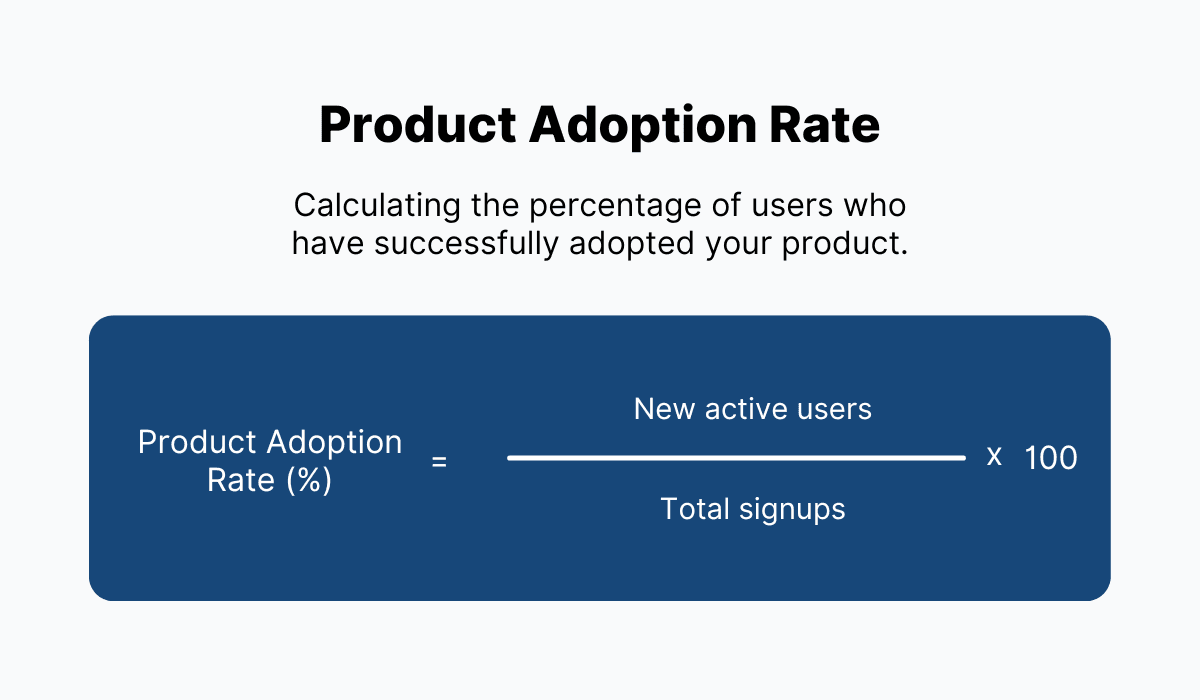
Source: Archbee
Obviously, you can use this metric to continually monitor how your product serves users.
A large drop in the rate can mean you’ve implemented a change that negatively affects the product's ease of use, quality of support, or market fit, so you can act quickly to correct the mistake.
Another use for the metric is gaining an insight into how many signees you stand to lose.
In other words, if the bottom half of the equation is heavy, meaning you have a lot of interested users who still aren’t sure about the product, you know that you need to take serious action to secure product adoption.
Otherwise, you stand to lose a significant segment of your user base that’s already far down the adoption funnel.
For example, you could consider running a special discount on your paid plans for a limited time to provide extra motivation to users to subscribe.
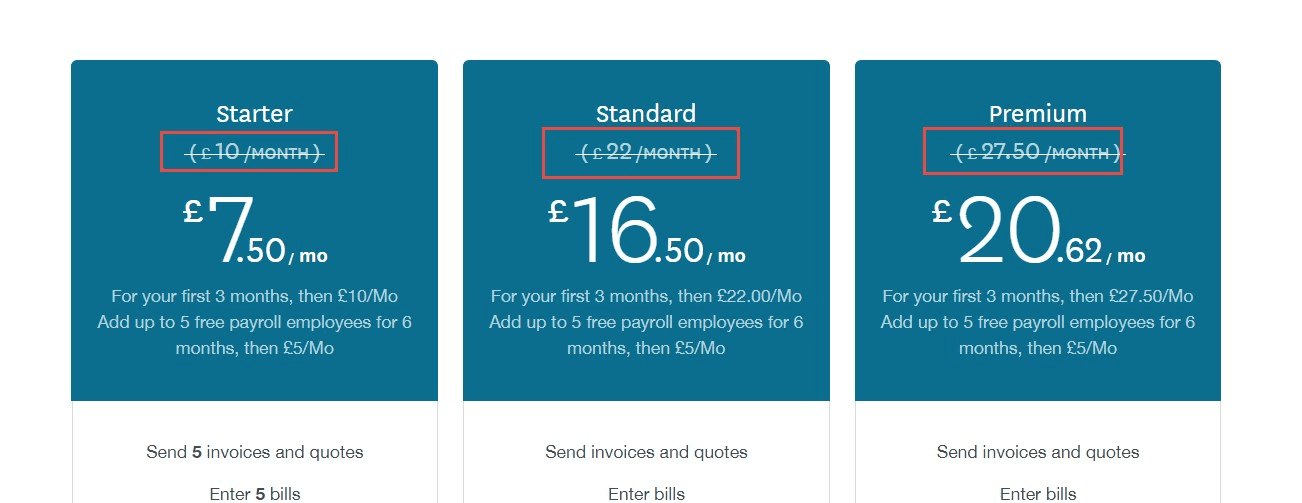
Source: Invesp
All in all, product adoption rate is a pretty straightforward metric. But don’t track it for cosmetic reasons. Instead, use it to come up with specific steps to take with your business.
Feature Adoption Rate
This metric is just as important as product adoption rate and calculated similarly (substitute new active users for new active feature users).
After all, your product consists of multiple features the user interacts with to accomplish their goals.

Source: Archbee
The importance of this metric lies in the fact that the more value users derive from your features, the higher the level of overall product adoption.
So, for example, if you notice that some features have significantly lower adoption rates than others, you can focus on improving those features to improve the overall results of your product.
Let’s say, hypothetically, that you operate a SaaS company that offers a communication app such as Slack.
Your product has both chat and video capabilities, but you notice that the latter feature lags behind chat in terms of adoption.

If users mainly use your product for chat, it’s going to be much easier for them to replace it with another, potentially cheaper, communication tool.
On the other hand, if it offers a unique mix of equally useful features to the user, you have a much better chance of complete adoption and making the product irreplaceable for the user.
That’s why it’s worth the effort to improve individual features until they’re on par with the best-performing ones.
And the metric that will give you that kind of insight is the feature adoption rate.
Net Promoter Score
Product adoption essentially expresses how your customer feels about the product.
All the other metrics we discussed in this article measure that feeling indirectly, but only the net promoter score (NPS) can directly quantify the user’s sentiment toward your product.
NPS figures are acquired by sending out customer surveys that ask them a simple question: how likely they would be to recommend the product to others in their social circle on a scale from one to ten.
According to their answers, users are divided into two cohorts, detractors and promoters. The difference between them is your NPS.
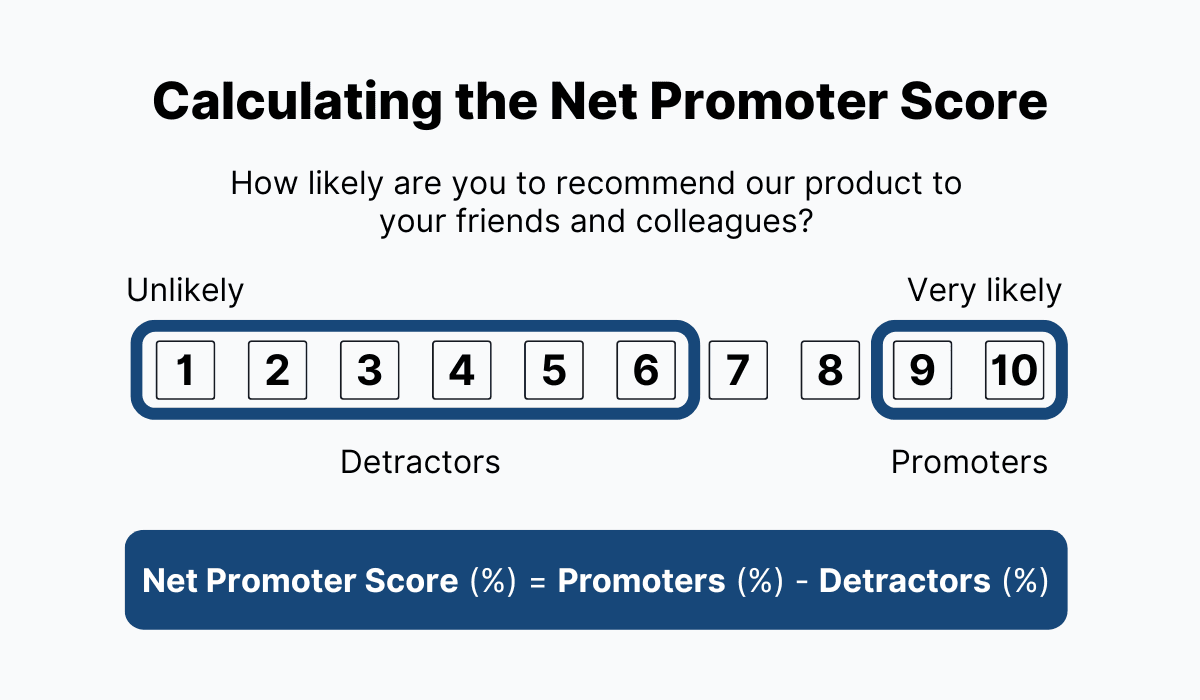
Source: Archbee
While other metrics in this article are tracked passively, using the reporting features of your analytics software, NPS is measured by reaching out to users and asking them to provide you with an NPS rating.
There is more than one way to do that.
You can use product adoption software like Whatfix to generate in-app feedback prompts, asking users to give ratings.
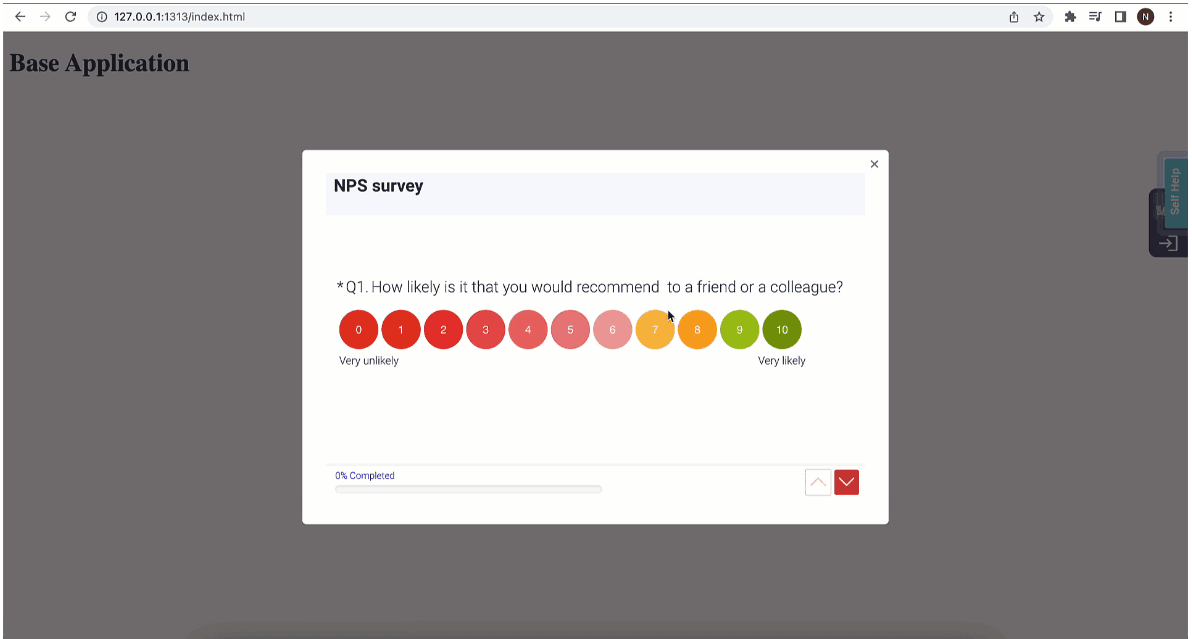
Source: Whatfix
This takes almost no effort on the part of the user, so you should be able to collect ample feedback this way.
If you don’t employ this kind of software, you can always send email surveys. These have a response rate of 10%-30%, so keep in mind you’ll have to send a bigger batch.
SurveyMonkey and other survey tools almost always have a template for NPS, so you won’t even have to create the survey yourself.
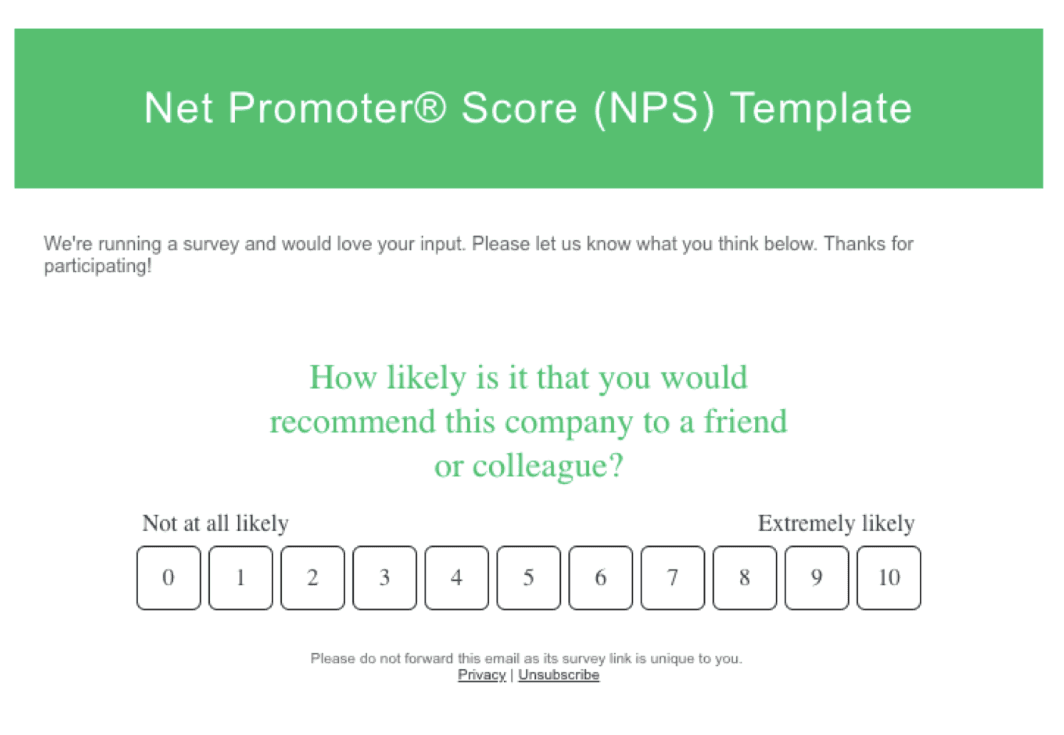
Source: SurveyMonkey
NPS is your way of keeping a finger on the pulse of customer satisfaction.
Those who would gladly recommend your product are users who have successfully adopted it, so this is a good metric to examine at regular intervals.
Customer Churn Rate
Finally, let’s talk about a metric you don’t want to reach high figures. Customer churn rate is the percentage of your customers who have abandoned your product in a given period of time.
It’s expressed as a percentage, so you calculate it by dividing the number of customers who have churned by your total number of customers at that moment.
This is another metric you can easily track using your analytics software. For example, here’s how churn analysis looks in Datapine.
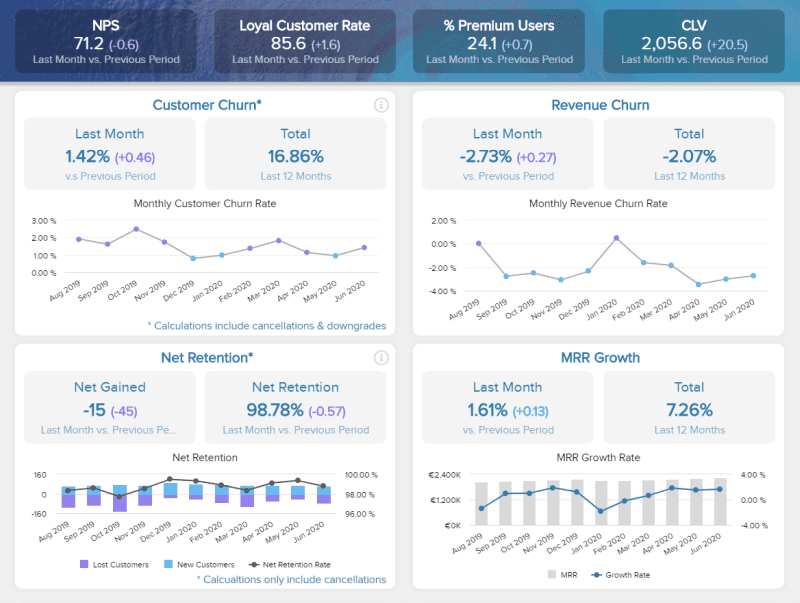
Source: Datapine
Monitoring this metric lets you notice if the way you’re developing your product negatively impacts product adoption.
For example, if you shorten your onboarding process and notice a sharp increase in customer churn, that could mean you’re preventing users from learning how to use the product properly.
In the opposite case, if you’ve implemented a product knowledge base to boost your customer support efforts and noticed significantly reduced churn rates (which is very likely to happen in that situation), then you know that you’ve positively impacted adoption with that change.
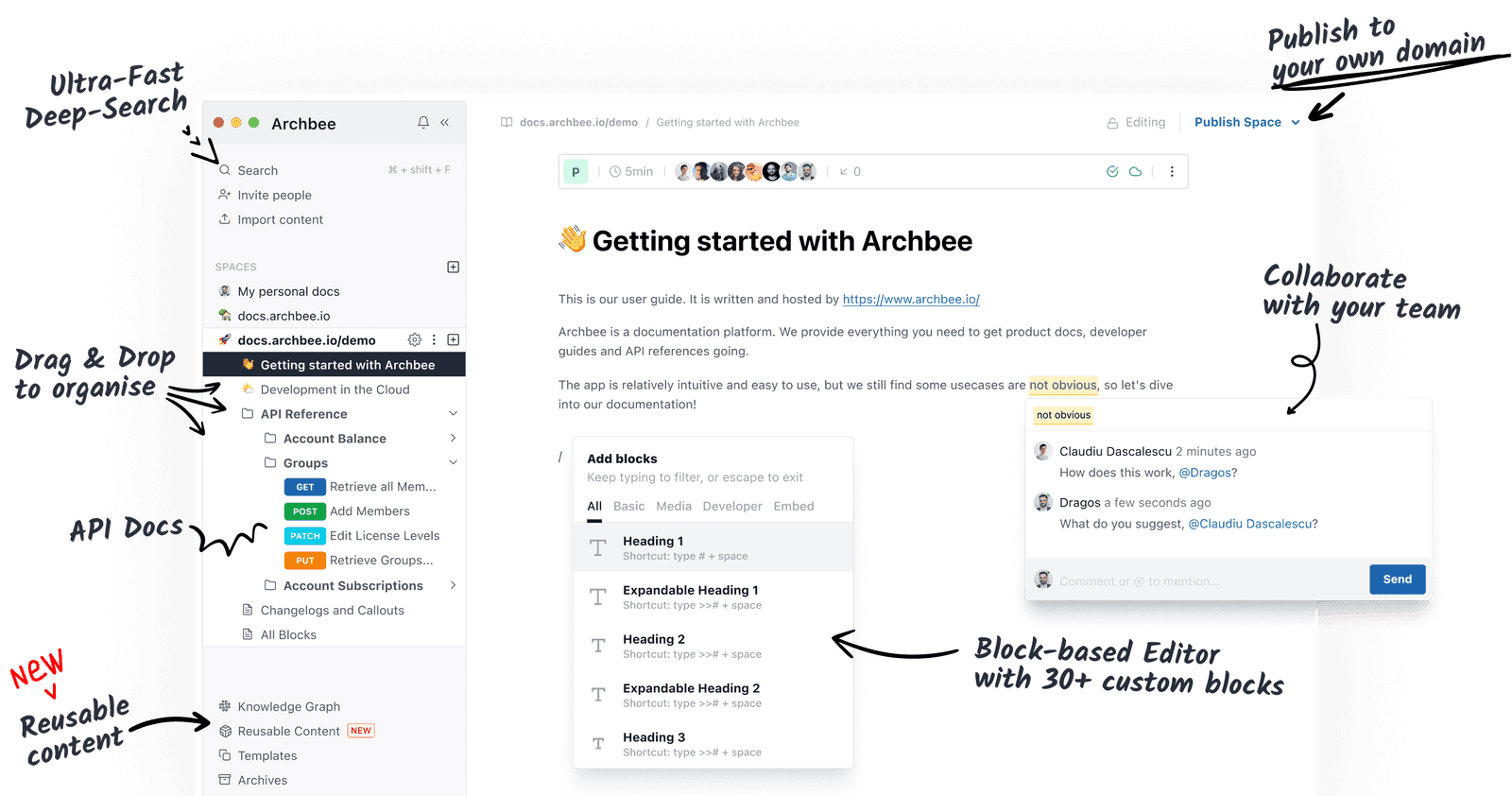
Source: Archbee
The important thing to know here is that every company experiences a certain amount of customer churn, and your goal should never be to eliminate churn completely, as that is impossible.
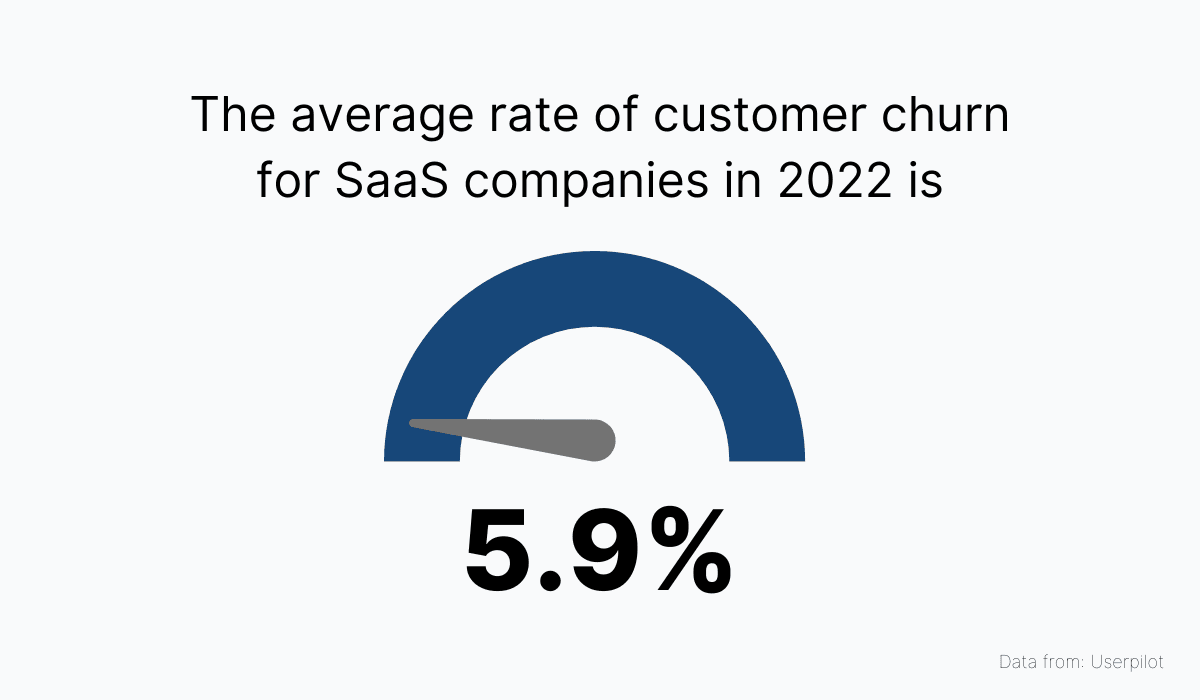
Source: Archbee
A much better practice is gradually minimizing churn by implementing changes that foster better adoption rates.
Try to aim for a churn rate that will allow your company to grow, despite a certain percentage of drop-offs.
In other words, keep the number of customers that churn lower than the number of new subscribers.
Customer churn is a normal part of doing business in the SaaS industry. Don’t be afraid of it and, instead, take it as an indicator of how well your users connect to your product.
Conclusion
The purpose of product adoption metrics is to verify the validity of your decisions regarding your product and the service you offer customers.
Metrics enable you to experiment with different approaches and features to see how users respond to them and whether they help them connect with the product better.
Monitor them closely if you want to gradually improve product adoption among your customers.
Try Archbee's full range of features with our free 14-day trial.
Frequently Asked Questions
Product conversion rate is the share of eligible users who complete a specific, measurable action on the path to adoption.
Examples include starting a trial, subscribing to a paid plan, inviting a teammate, or completing a setup task.
Product conversion rate (%) = (conversions ÷ eligible users) × 100 `Why it matters: - **Maps funnel health:** Shows where users move forward and where they get stuck. - **Aligns teams:** Helps product, marketing, and sales prioritize fixes and experiments that improve activation and paid conversion. - **Quantifies impact:** Measures the effect of onboarding tweaks, pricing tests, and UX changes so you can double down on what works. How to track well: - **Define “eligible users” precisely** for each step (e.g., users who saw the paywall). - **Slice by cohort, channel, and persona** to spot friction and tailor improvements. - **Instrument stage-to-stage rates** (view → start → complete) to find the real drop-off. - **Avoid vanity conversions:** Require meaningful actions, not just clicks.
